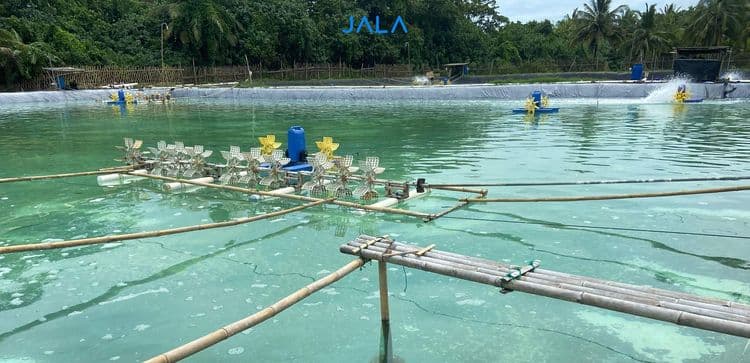
The success of shrimp cultivation highly depends on water quality. Water filtration is one of the efforts that farmers can take to improve their water quality. Apart from optimizing water quality, water filtration also plays a role in preventing disease outbreaks, ensuring water clarity, conserving water usage, and enhancing overall shrimp farm productivity and sustainability.
Shrimp pond water consists of dissolved and suspended compounds. The presence of suspended compounds can cause the water to be murky, obstruct sunlight penetration, reduce the photosynthesis activities of algae, and result in relatively low levels of dissolved oxygen. This causes shrimp growth to decrease. Additionally, toxic compounds such as ammonia, H2S, and heavy metals need to be controlled and reduced.
Filters can be used during the water preparation stage of the pond. Water filters are used when water is pumped from the main inlet channel into the water to sterilize the water. Furthermore, filters can be placed in water tanks before the water is directed into the cultivation pond. Some farms also implement a recirculation system, in which filtered pond water is reused by continuously circulating the water, thus conserving water.
Various Types of Filters and Their Benefits
Filters can be classified as physical, chemical, and biological types. Physical filters separate solids from water based on size through filtration, reducing the content of those substances. Chemical filters remove soluble organic molecules through oxidation processes or direct absorption. Biological filters or natural agents help break down organic nitrogen compounds.
Here are some types of filters and their benefits:
Activated carbon
Activated carbon can absorb residual soluble organic matter in the pond, improving water quality. If activated carbon is used, sediment and clumps that form should be frequently siphoned to maintain water quality.
Zeolite
Zeolite is a crystalline aluminosilicate with micropores that can absorb heavy metals, excess ammonia, and lime from pond water.
Sand
Sand can filter solid particles suspended in water. It is commonly used together with pebbles or gravel in water tanks where the filtration process takes place.
Biofilter
Biofilters are natural agents to absorb ammonia, such as nitrifying bacteria and aquatic plants, or predators of phytoplankton like tilapia and green mussels.
A proper filtration system ensures that their shrimp is able to grow well and their cultivation stays productive. By regularly testing the water quality, farmers can identify whether the parameters are already ideal and adjust their filtration system accordingly. Moreover, regular cleaning or replacement of the filter media ensures optimum filter performance for the long run. That way, farmers can create a favorable environment for shrimp growth, minimize the risk of diseases, and ultimately enhance the productivity and profitability of their shrimp farms.





